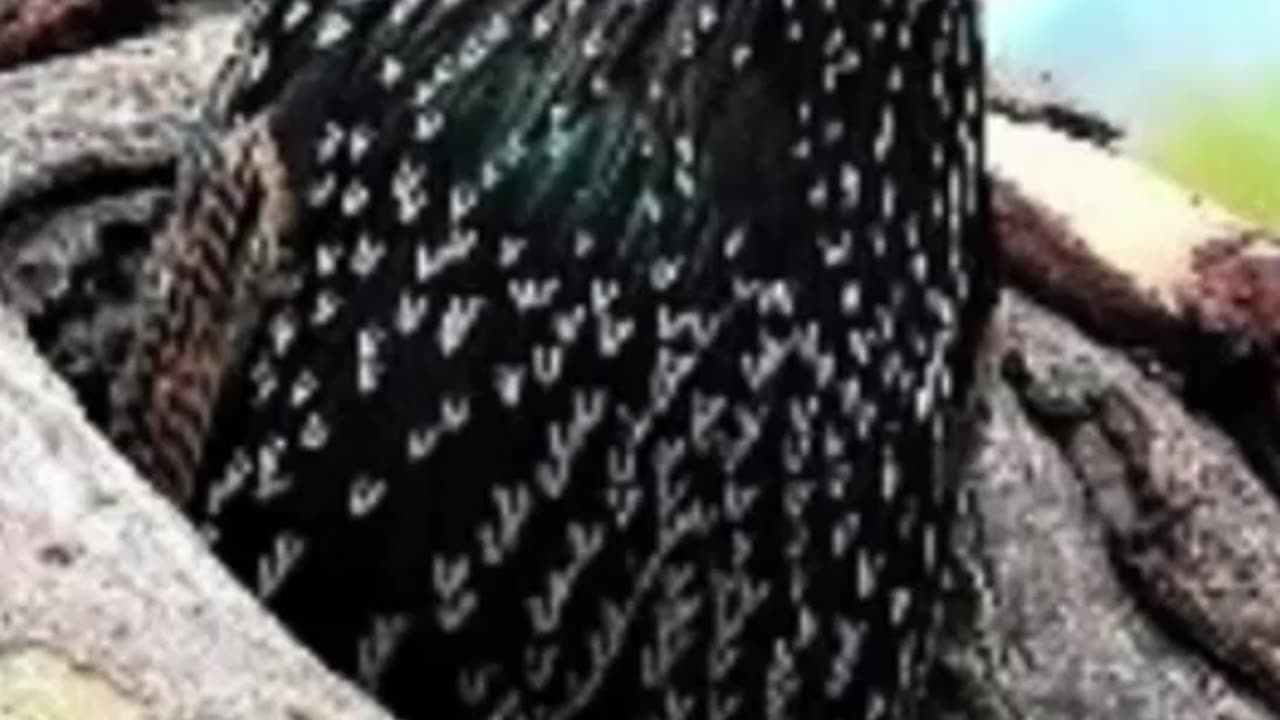Premium Only Content

The spotted starling
Follow on facebook:
https://www.facebook.com/top2reels
The spotted starling[2] (scientific name: Sturnus vulgaris) is a medium-sized passerine bird of the starling family (Sturnidae). It is about 20 centimeters long and has shiny black plumage with a metallic sheen, speckled with white at certain times of the year. The legs are pink and the beak is black in winter and yellow in summer; Young birds have more brown plumage than adults. It is a noisy bird, especially on community roosts and other gregarious situations, with non-musical but varied singing. His gift for mimicry has been noted in literature, including the Mabinogion and the works of Pliny the Elder and William Shakespeare.
The Spotted Starling has about 12 subspecies that breed in open habitats throughout its native range in temperate Europe and the Palearctic west of Mongolia, and has been introduced to Australia, New Zealand, Canada, the United States, Mexico, Argentina, South Africa and Fiji.[3] This bird is resident in western and southern Europe and southwest Asia, while northeastern populations migrate south and west in winter within the breeding range and also further south to the Iberian Peninsula and North Africa. The Spotted Starling builds an untidy nest in a natural or artificial cavity in which four or five bright, pale blue eggs are laid. These take two weeks to hatch and the young remain in the nest for another three weeks. There are usually one or two breeding attempts each year. This species is omnivorous, having a wide variety of invertebrates, as well as seeds and fruits. It is hunted by various mammals and birds of prey, and is host to a number of external and internal parasites.
Large flocks typical of this species can be beneficial to agriculture by controlling invertebrate pests; however, Spotted Starlings can also be pests when they feed on fruits and shoots. They can be a nuisance because of the noise and mess caused by their large urban roosts. Introduced populations in particular were subjected to a range of controls, including culling, but these had limited success, except in preventing the colonization of Western Australia. The species has declined in numbers in parts of northern and western Europe since the 1980s due to fewer grassland invertebrates available as food for growing young. Despite this, its massive global population is not thought to be decreasing significantly, so the Spotted Starling is classified as Least Concern by the International Union for Conservation of Nature (IUCN/IUCN).
taxonomy and systematics
The spotted starling was first described by Charles Linnaeus in his Systema Naturae in 1758 under its current binomial name.[4] Sturnus and vulgaris are derived from the Latin for "starling" and "common", respectively.[5] Old English staer, later stare and Latin sturnus are both derived from an unknown Indo-European root dating back to the 2nd millennium BC. XVI had already superseded "stare" to refer to birds of all ages.[6] The older name is referenced in the William Butler Yeats poem The Stare's Nest by My Window.[7] The preferred English vernacular name of the International Ornithological Congress is Common Starling.[8]
The starling family, the starlings (Sturnidae), is an entirely Old World group, apart from introductions elsewhere, with the greatest number of species in Southeast Asia and sub-Saharan Africa.[9] The genus Sturnus is polyphyletic and the relationships between its members are not fully resolved. The closest relative of the Spotted Starling is the Black Starling (Sturnus unicolo).[10] The non-migratory starling may be descended from an ancestral population of S. vulgaris that survived in an Iberian refuge during an Ice Age retreat,[11] and studies of mitochondrial genes suggest that it could be considered a subspecies of the spotted starling. There is more genetic variation between populations of Spotted Starlings than between Spotted Starlings and Black Starlings.[12] Although spotted starling remains have been known since the Middle Pleistocene,[13] part of the problem in resolving relationships in starlings is the paucity of the fossil record to the family as a whole.[11]
Subspecies
There are several subspecies of Spotted Starling, which vary clinally in size and color tone of adult plumage. Gradual variation across the geographic range and extensive intergradation means that acceptance of the various subspecies varies between authorities.[14][15]
-
 2:17:30
2:17:30
barstoolsports
9 hours ago$250k Winner Revealed With Final Votes And Reunion | Surviving Barstool S4 Finale
84.4K5 -
 2:05:49
2:05:49
Kim Iversen
7 hours agoTikTok Ban BACKFIRES: Millions Flee To New App Showing The REAL China
83.4K82 -
 1:35:12
1:35:12
Glenn Greenwald
9 hours agoCNN And Jake Tapper In Deep Trouble In Defamation Lawsuit: With Jonathan Turley; TikTok Ban, Trump's China Policy, And More With Arnaud Bertrand | SYSTEM UPDATE SHOW #390
85.3K47 -
 12:24
12:24
Dan Bongino Show Clips
10 hours agoPresident Trump Full Interview - 01/16/25
115K281 -
 1:27:39
1:27:39
Man in America
9 hours agoBig Pharma's Deadliest Lie is Being EXPOSED to the Masses w/ Jonathan Otto
36.4K17 -
 1:40:08
1:40:08
Precision Rifle Network
1 day agoS4E2 Guns & Grub - Training Vs. Competition
17.8K -
 58:27
58:27
Flyover Conservatives
1 day agoGarrett Ziegler Breaks Down Special Councilor’s Report on Hunter Biden. Insights for Trump’s Top Picks. | FOC Show
46.3K1 -
 44:54
44:54
Steve-O's Wild Ride! Podcast
13 hours ago $8.27 earnedMark Wahlberg Threatened To Beat Up Jackass Cast Member - Wild Ride #251
100K11 -
 1:13:34
1:13:34
Josh Pate's College Football Show
7 hours ago $1.02 earnedCFB Dynasties & Villains | Marcus Freeman OR Ryan Day | 2025 Sleeper Teams | Cole Cubelic Joins
28.7K -
 1:00:26
1:00:26
The StoneZONE with Roger Stone
5 hours agoSHOCKING NEW TAPE PROVES LBJ KILLED JFK! | The StoneZONE w/ Roger Stone
48.8K18